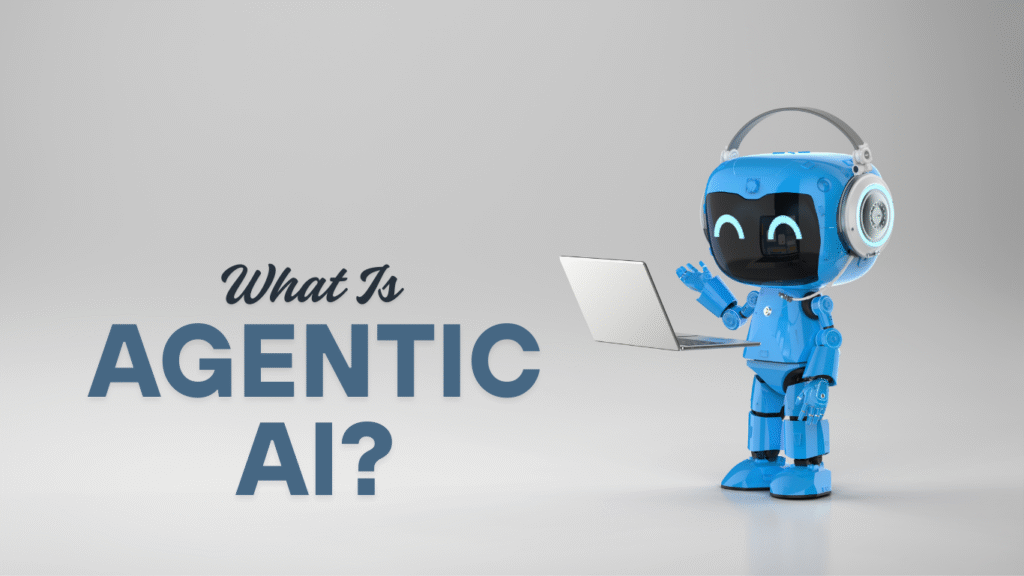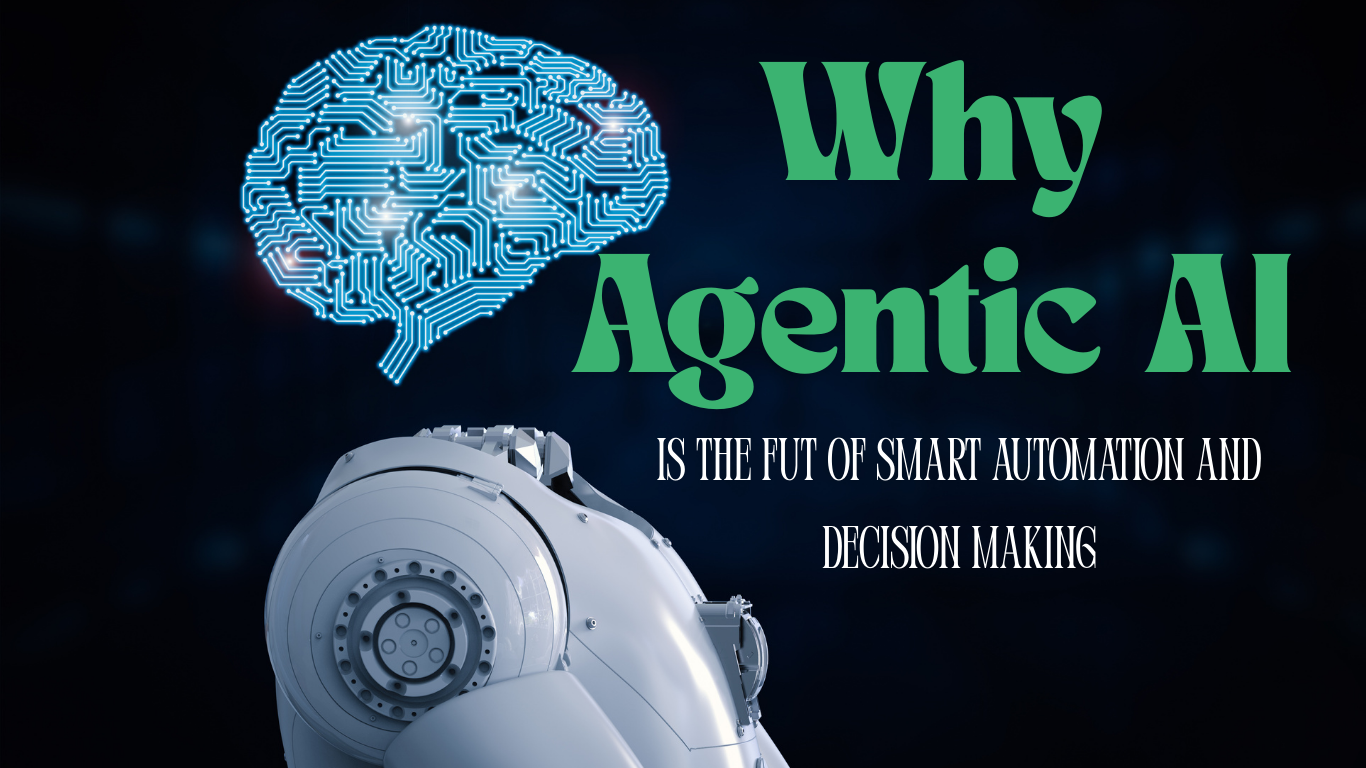Undoubtedly, Artificial intelligence is evolving from merely generating text or images in response to prompts. This next significant advancement is the development of agentic AI. This innovative approach enables AI systems to understand their surroundings, specify objectives, and take proactive actions to achieve those goals.
Moreover, a recent report by Gartner highlights that in 2024, less than 1% of enterprise software applications were utilizing agentic AI techniques. However, projections suggest that this figure could increase significantly to 33% by 2028. This trend indicates a growing recognition of the value that agentic AI offers to businesses.
Throughout this article, you will gain a clearer understanding of why more organizations are looking to implement these advanced techniques.
What Is Agentic AI?

The concept of agentic AI does not have a universally accepted definition. While some people use the terms “agentic AI” and “AI agents” as synonyms, others differentiate between the two.
Agentic AI means artificial intelligence systems that are characterized by their ability to function with a certain level of autonomy. These systems can make decisions and carry out actions aimed at achieving defined objectives.
In contrast to conventional AI, which typically relies on specific prompts to produce outcomes, agentic AI is capable of analyzing situations, formulating strategies, and executing multiple tasks simultaneously. These applications retain control over their processes for performing tasks, using various tools and making decisions about their internal processes.
Agentic AI vs Traditional AI
Traditional AI and agentic AI mainly differ in how much independence and flexibility they have.
Traditional AI is built to handle specific jobs using set rules or training data. These models look at the input and give back outputs, but they cannot make their own decisions beyond what they have been programmed to do. Some examples of this are recommendation systems, chatbots, and predictive models.
Agentic AI represents an advancement beyond traditional passive systems by engaging in active planning, adaptation, and real-time decision-making. This type of AI is capable of interacting with various systems and utilizing external tools to enhance its functionality. Also, it has the ability to refine its own objectives based on the context it operates in. Rather than solely depending on user input, agentic AI can proactively initiate tasks, learn from the feedback it receives, and continuously improve its performance over time.
| Feature | Traditional AI | Agentic AI |
| Autonomy | Responds to user input but lacks the capability to function automatically. | Can operate independently, take the initiative in its actions, and adjust to changing conditions. |
| Interaction | Processes input and return output. | Works with different systems, tools and outside APIs. |
| Use Cases | Applicable in areas including predictive analytics, automation, and classification | It supports autonomous research, task delegation, and real-time adaptability. |
| Flexibility | Tailored for specific tasks such as chatbots and recommendation engines. | This approach adeptly manages complex, multi-step processes and incorporates dynamic goal-setting. |
| Learning | Improvement in performance necessitates retraining. | There is potential for self-improvement and dynamic optimization of workflows. |
| Limitations | It operates effectively within predefined functions. | Adaptability may be limited, requiring vigilant oversight to mitigate potential risks of unintended outcomes. |
How Does Agentic AI Work?
Agentic AI represents a conceptual approach to designing AI systems that offers a higher degree of independence compared to traditional models.
While the specifics can differ from one application to another, many agentic AI systems are characterized by the integration of multiple large language models (LLMs) that interact through prompts, utilize external tools, and possess the ability to read and write files.
These systems usually work in a way that doesn’t require everything to happen at the same time, making them feel more like connected networks rather than separate units. This setup really boosts their flexibility and usefulness.
Multiple models, multiple roles
A lot of times, an agentic AI system isn’t just one model doing its thing—it’s a lot of models working together. A typical setup has different models each taking on specific roles.
For example, one model might act as the task manager, breaking down complicated problems and handing out subtasks to the other models. These sub-models then take care of their tasks and send their results back to the task manager, which puts everything together and checks it over.
This modular way of working lets agentic AI tackle more complex tasks than a single model could handle alone. Instead of doing everything one step at a time, tasks can run at the same time, making the whole system quicker and more efficient.
External tools and data handling
For AI to do more than just spit out text, it needs to tap into some external tools. This could be stuff like APIs for getting real-world info, databases for keeping track of data, or file systems for reading and writing documents.
There are some tools out there, like LangChain and LlamaIndex, that make it super easy to connect language models to these kinds of resources. With these, the AI can pull data from databases, fetch search results, or even work with other software applications.
Asynchronous processing and distributed architecture
Unlike traditional AI that handles tasks one at a time, agentic AI works in a more laid-back way where different models can tackle various parts of a problem all at once. It’s a bit like how blockchain operates—it feels decentralized.
For example, imagine an AI research assistant: one model might dig up relevant documents while another goes through their content, and yet another puts together a summary—all going on at the same time.
This parallel processing makes agentic AI pretty efficient, but it also comes with some headaches when it comes to coordinating what each part is doing and keeping everything consistent.
Conclusion
Agentic AI represents an exciting new chapter in the world of Artificial Intelligence. It is not just about reacting to inputs anymore; these systems are becoming proactive, making their own decisions and setting goals. Just like traditional AI, which follows a set path, Agentic AI is much more dynamic. It can interact with its environment, adjust to changes, and continuously improve its actions.
As more businesses start to see the amazing possibilities Agentic AI offers, we are likely to see a big increase in its use in the coming years. Thus, embracing this technology can lead to great efficiencies, spark new ideas, and change the way organizations tackle challenges in our digital world.



